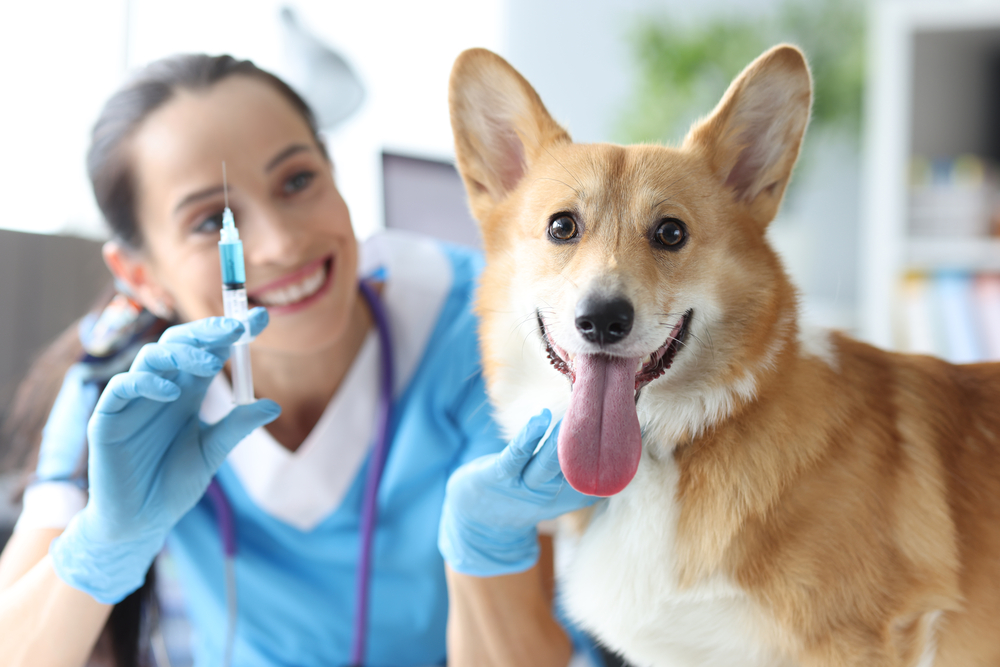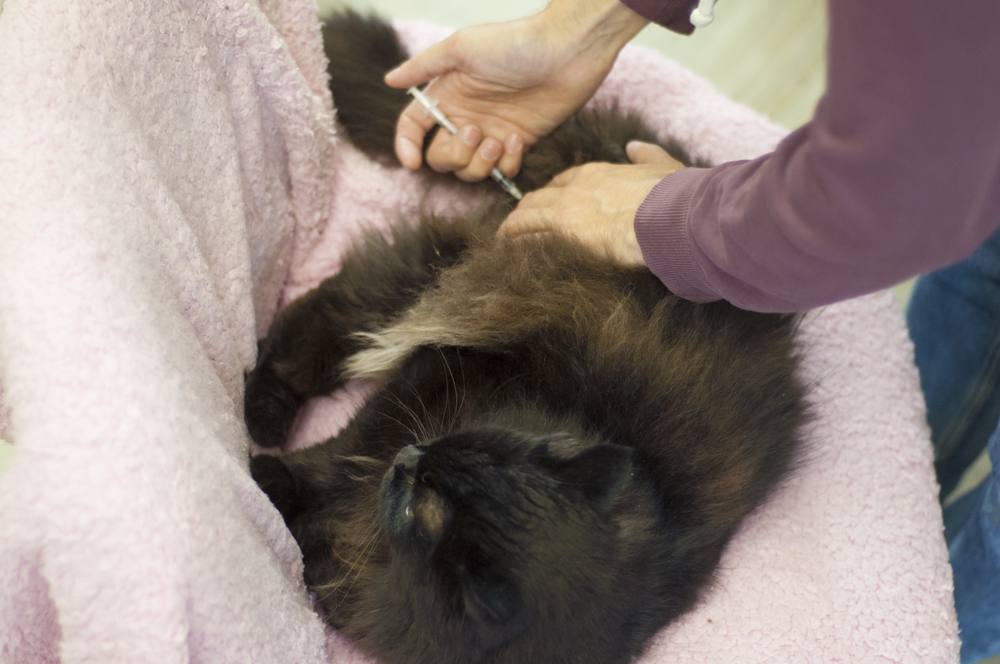Sleeping a lot could be perfectly normal for a pet, or it could be a sign of an illness, anxiety, or other problem.
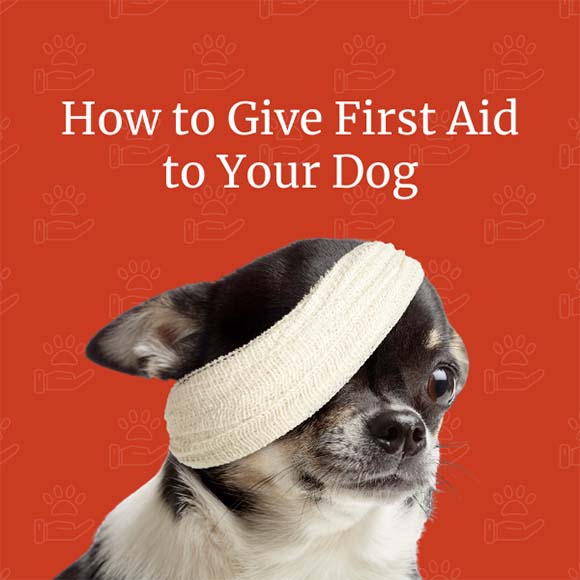
Learn how to give first aid to help save your dog’s life
Read Time: 5 minutes
A vital part of keeping your dog safe is knowing how to respond in emergencies. Administering first aid can help save their life, especially in instances when waiting for a vet might take too long. Let’s break down the most common types of emergencies and what to do to help your dog.
What to Do When Your Dog Has an Emergency

The most important thing to do when your dog has an emergency is to remain calm and act rationally. This can be difficult when you are panicked or scared, so it’s best to be prepared. First aid will not always solve your dog’s underlying problem. The main purposes of first aid are to preserve your dog’s life, reduce their pain and discomfort, and minimize any risk of disability or disfigurement.
Start by taking the following steps:
- Assess the scene: Determine what is affecting your dog and ensure there are no ongoing threats to your pet’s or your safety (such as an attacking animal or fire)
- Keep your dog safe: Make sure your dog is as warm and quiet as possible by using blankets or clothing, and keep their movement to a minimum, especially if they are injured
- Contact your vet: Call your veterinarian or local animal hospital and tell them what happened. If immediate care is needed, they can offer you advice over the phone
Restraining a Dog
Sometimes you will need to restrain your dog if they are panicking. Be as calming and gentle as possible. You may have to muzzle them (unless they are choking or experiencing heat stroke) to prevent them from biting you. You can use a leash, belt, sock, or rope to create a makeshift muzzle. Then wrap them in a blanket or towel, keep the head exposed, and do not block the dog’s airways. If you are nervous about a spinal injury, immobilize the dog using cords or straps, but be careful around their head and neck.
How to Respond to Different Emergencies
Your next steps will depend on what type of emergency your dog is experiencing.
Injuries Such as Fracture or Broken Bones
If your dog appears to have fractured or broken bones, follow these steps:
- Try to immobilize the dog as quickly as possible. If your dog is small enough, you can put it in its carrier – but put it in through the top, not the side door, to prevent further injuries. Larger dogs might need a makeshift stretcher, which you can make out of a large piece of wood.
- Use a blanket to move the dog onto the stretcher or into the carrier.
- Carefully transport your dog into the car and to the vet.
Bleeding

If your dog is bleeding, utilize a dressing, piece of clothing, or absorbent bandage to apply pressure and stop the bleeding. Hold the dressing with pressure for several minutes before checking to see if the bleeding has stopped. If it continues, get to a vet as quickly as possible to minimize the risk of infection. In severe situations, you can apply a tourniquet using an elastic band or gauze.
Shock
Sometimes dogs go into shock, which is a reaction due to emergency situations such as trauma, loss of blood, or heart failure. Symptoms include:
- Rapid breathing
- Elevated heart rate
- Pale mucous membranes (lips, gums, eyelids)
- Cold feet and/or ears
- Shivering
- Vomiting
Shock can be fatal, so it is vital to take action as quickly as possible. Your dog might become quiet and unresponsive as the shock continues. Follow these steps:
- Restrain the dog as described earlier
- Keep the dog warm and quiet
- Keep the head level with the rest of the body if the dog is unconscious
- Transport to a vet immediately
If your dog is in shock, they also risk choking or not breathing. We describe how to respond to these problems below.
Choking
Choking is a serious hazard to your dog’s health. Symptoms include retching, excessive pacing, and pawing at the mouth. Your dog might not produce any sound if the airway is totally blocked. Follow these steps:
Clear the Airway
- Open your pet’s mouth to view their airway, carefully avoiding panicked biting.
- If your pet is still breathing, it’s best to start driving to a veterinarian or call one to you at this point.
- Look for obstructions such as vomit or foreign bodies.
- If you see an object, remove it with tweezers or forceps. Try not to use your fingers as you can more easily push the object further in this way.
- Note that some dogs have an additional cavity at the top of their mouth that you should check.
- If you can’t remove the object, can’t see it, or believe there is something large stuck in your dog’s airway, you can place your thumbs underneath their jaw at the base of their throat, apply pressure and push forwards to dislodge the item.
- If this doesn’t work, lay your dog on their side and gently pump the chest with the palm of your hand.
- You can also try removing an object by turning the dog upside down, with its back to your chest, and applying five sharp thrusts to the abdomen to expel the object.
Check for Breathing and Pulse

- If you fear your pet is not breathing, check for a heart or a femoral pulse. This pulse is found in the upper third of the back leg, near the groin. Use your fingers instead of your thumb since your thumb has a strong pulse of its own.
- If your dog is not breathing, perform rescue breathing.
Perform Rescue Breathing
If your dog is not breathing, you should begin rescue breaths before beginning CPR. Follow these steps to perform rescue breathing:
- Ensure there is an open airway by pulling out the tongue and extending the head and neck in a straight line unless the dog has severe head trauma.
- Close your dog’s mouth shut and extend the neck.
- Blow into the dog’s nostrils, 2-3 breaths at a time, until you see the dog’s chest expand. Then continue with a rescue breath once every 4-5 seconds.
- If the chest does not rise, reposition the neck and search again for airway obstructions.
- If your chest has no heartbeat, start CPR (read below) while continuing rescue breaths.
How to Give a Dog CPR
If your dog has no pulse or heartbeat, you should begin administering CPR.
- Make sure there is no major bleeding.
- Lie the dog on their right side.
- Bend the dog’s left forearm. The place where the elbow touches the chest indicates the middle of the ribcage, where the heart is.
- Place one hand on either side of this part of the ribcage. For small dogs, you may use one hand with the thumb on one side and the fingers on the other.
- Compress the chest 80-120 times per minute for larger dogs and 100-150 times per minute for smaller dogs.
Note: you should not perform chest compressions and rescue breathing at the same exact time. You should alternate between them or work with another person. One person can do the chest compressions for four to five seconds, then stop long enough for the other person to give one rescue breath. Continue until you hear a heartbeat and the pet is breathing normally.
Burns/Scalds
If your dog has been burned or scalded, cool the burned area with cold water as soon as possible. Cover the burned area with damp towels. If the burn was caused by something potentially hazardous, rinse for 15 minutes and call your vet ASAP. If the dog was exposed to smoke or fire, give them water to drink as soon as possible.
Eye Injuries
If your dog has something in its eye, try to rinse it out with an eyewash or a contact saline solution, as long as saline is the only ingredient. Don’t let your dog rub its eye and get it to the vet as soon as possible.
Seizures
Keep the seizing dog in a dark, quiet, and confined area away from furniture or other dangers until you can get medical attention. Do not try to get into their mouth as they will likely bite you. Time the seizure. After it is over, keep them as warm as possible until you get to the vet.
Sometimes, nursing mothers can seize due to eclampsia. If this is the case, take the nursing puppies off the mother as soon as possible.
Heat Stroke

Heat stroke is a largely preventable ailment, but it’s important to know how to respond if it does happen. Signs of heat stroke include excessive panting and obvious distress. Follow these steps:
- Get the dog into a cool and shaded place as soon as possible.
- Reduce the dog’s body temperature using cool – but not ice-cold – water. You can pour water over the dog or use cold, wet towels.
- Keep the dog wet during transport to the vet.
- Keep the car’s windows down as evaporation can help reduce your dog’s body temperature.
Your Dog May Have Eaten Something Poisonous
Call your vet immediately, do not make your dog throw up, and do not let them groom. Read our blog post on potential poisoning for detailed instructions.
How to Prepare Yourself for an Emergency
To prepare for future dog emergencies, keep your vet’s number and address in your phone and somewhere easily accessible in the house. Keep a pet first aid kit in your home and your car. Additionally, consider taking a pet CPR or first aid class to learn life-saving skills.

Concerned about your pet’s health?
Contact us
If you have any questions about your cat’s behavior, please call our clinic at (407) 352-2579. We’ll help you through it.

Talk to your vet to determine if the issue is medical, behavioral, or environmental
Read Time: 6 minutes
There are a number of different reasons why a cat might not use the litter box. Some of these are behavioral while others might be health-related. You’ll want to rule out health problems first before turning to the other possibilities.
Medical Conditions
There are various medical conditions that could cause your cat to avoid using the litter box. These include:
- Urinary tract infection
- Constipation
- Kidney stone
- Bladder stone
- Diabetes
- Cystitis
- Hyperthyroidism
- Cancer
- Arthritis
Take Your Cat to the Vet

If you notice that your cat isn’t using the litter box, the first thing you should do is take your cat to the vet. The vet can determine whether a medical condition is afflicting your pet or if the cause is something else. After you first notice that your cat isn’t using the litter box, keep an eye out for other symptoms. For example, if your cat isn’t relieving itself anywhere, then it may be constipated. If there’s bloody urine, it could a urinary tract infection.
Book an Appointment Right Away
You’ll want to have as much information as possible to give your vet, but don’t wait to make an appointment. Your vet has many tools at their disposal to diagnose your pet even if you don’t have time to observe for other symptoms. There’s bloodwork, fecal examination, urinalysis, or event ultrasounds and x-rays that a vet can use to determine what might be ailing your cat.
Behavioral Issues
It’s important to eliminate possible medical issues first. If your vet has thoroughly checked over your cat and found that there’s no underlying medical condition causing them to not use the litter box, then it’s time to look for behavioral or environmental problems. You’ll have to pay close attention to your cat’s overall behavior and where they’re spraying in order to discover whether there’s an environmental stressor affecting their behavior.
Stress
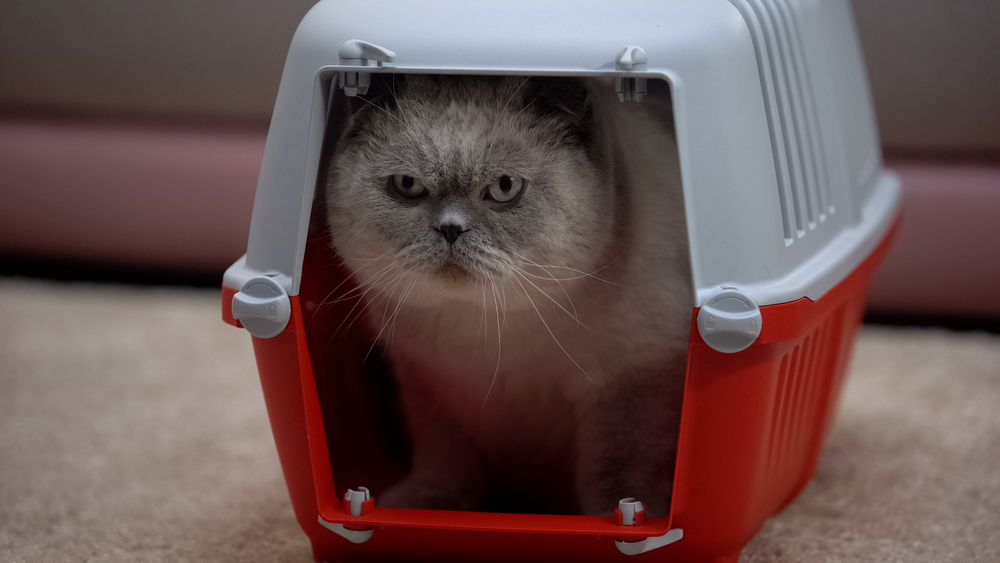
One possible cause of inappropriate elimination is stress. If your cat is stressed, they might:
- Spray items new to the home that bring in new scents
- Spray vertical or upright surfaces
- Spray windows
- Spray doors
- Spray hallways
- Spray stairways
- Defecating in the litterbox but spraying outside of it
- Spraying in the litter box sometimes but not always
Stress Caused by an Internal Issue
If your cat is spraying in hallways, stairways, and near interior doorways, then the cause of the stress may be inside the home. It could be something like remodeling, rearranging, a new baby, a new pet, or something else that has changed within the house.
Stress Cause by an External Issue
If your cat is spraying near windows and exterior doorways, then they may be detecting a threat outside of the home. Your cat could be sensing something outside that is causing them stress.
How to Treat Your Cat’s Stress
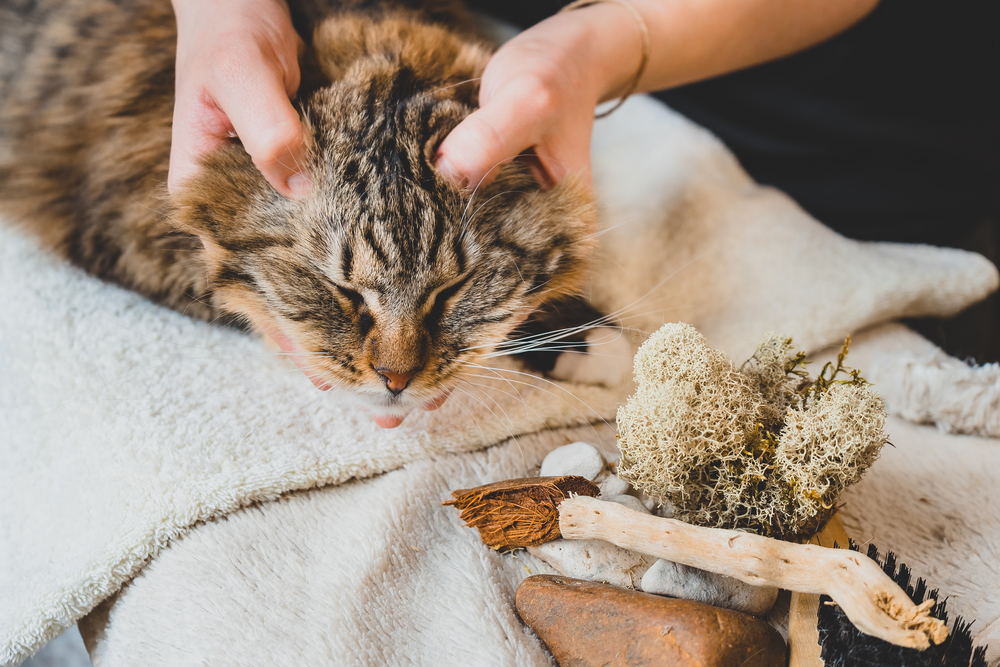
If you believe that your cat is stressed or suffering from anxiety, then you should speak to your vet. There may be anti-anxiety medication that you can give to your cat to help. Your vet may also be able to help you to determine the cause of the stress and to recommend techniques you can use to calm your cat. Cats often don’t like change, so it’s also possible that your cat will stop spraying on their own after they adjust to that change.
Environmental Issues
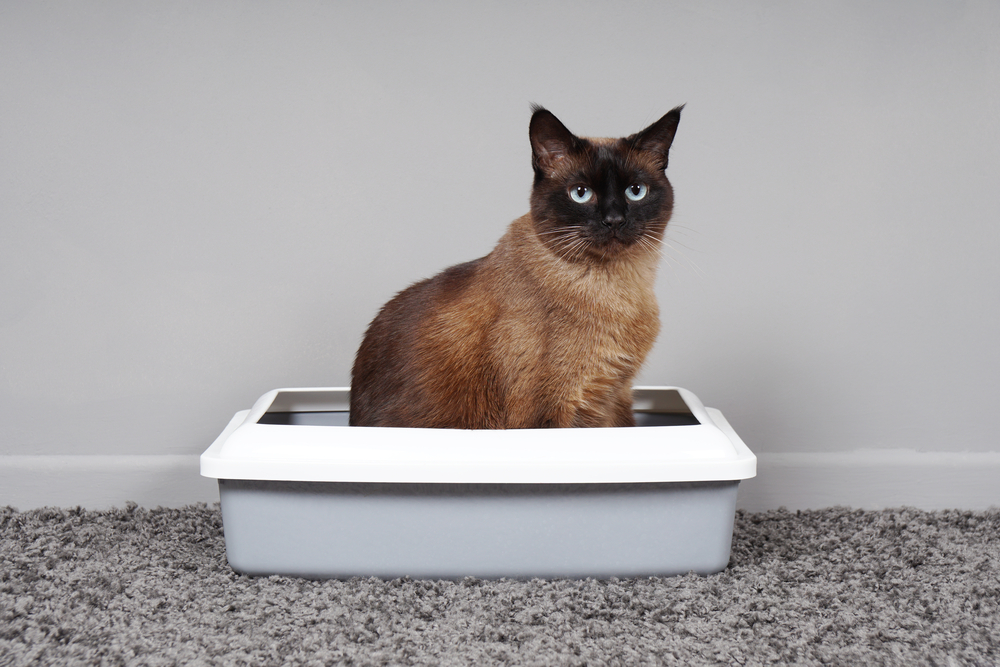
Cats can be picky about their litter boxes. If the environment isn’t to their liking, whether it’s the location, the type of litter, the number of litter boxes, or something else, then they might eliminate somewhere else.
Not Enough Litter Boxes
If you have more than one cat, it’s important to have enough litter boxes. You should have a number of litter boxes equal to one more than the number of cats you have. If you have three cats, then you’ll need four litter boxes. You’ll also need to make sure that the litter boxes aren’t placed close to one another. Ideally, they should be on separate floors when possible.
Litter Box Location
The litter box should be in as quiet and private a place as possible. They should also be located as far away from your cat’s food dish as you can manage. Additionally, the box shouldn’t be located somewhere dark or tight, like a closet. If the litter box isn’t in a location that your cat likes, then they may eliminate elsewhere. It’s also important to not move the litter box unless you have to because cats are creatures of habit.
Block off the Litter Box
If you have small children, you may want to block off access to the litter box in such a way that your cat can still reach it but that your children can’t. Unwanted intruders like children or other pets could disturb your cat’s sense of privacy and security with that litter box location, which could drive them to avoid using it.
Cleanliness
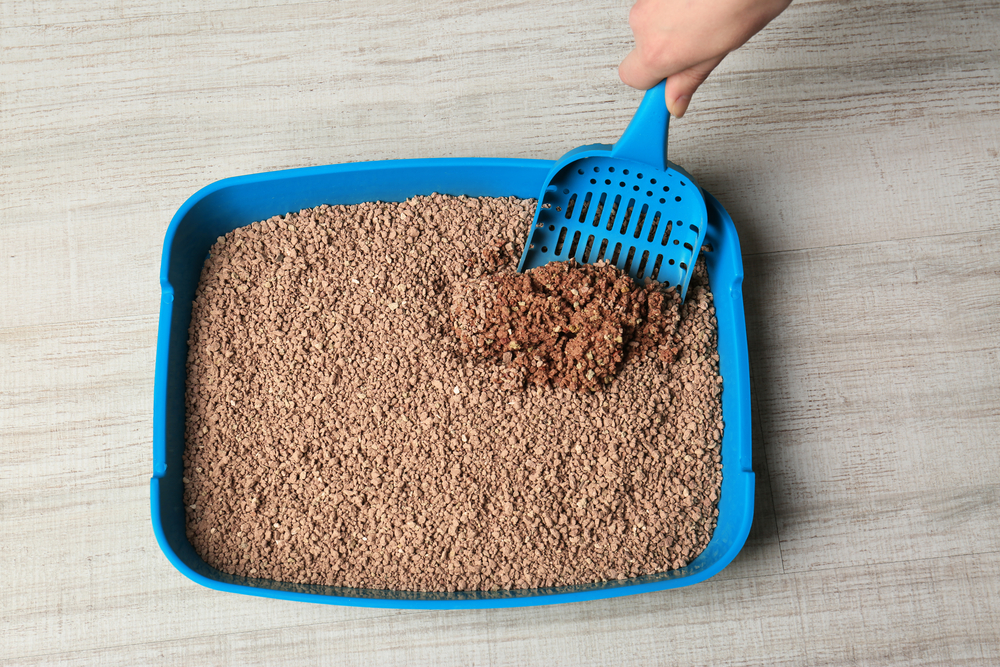
It’s vital to keep the litter box and the area around it clean. Cats tend to be fastidious about cleanliness and if they think their litter box isn’t clean enough, they won’t use it. How often you need to clean the litter box depends on the cat. Some cats require the litter box to be cleaned after every use while others are willing to use it a few times before you have to clean it.
Type of Litter
The type of litter also matters. Different litters have different textures and smells and if your doesn’t like it, they won’t use it. If you’ve recently changed the type of litter you buy for your cat, then that could be the cause of the inappropriate elimination. Try an unscented brand or a different material. Many cats prefer a sandier type of litter.
Type of Litter Box

Some cats don’t like a hood on their litter box, preferring it to be open. Others prefer the litter box to have a top. It’s also possible that your cat could be too big for the litter box. Older cats might have difficulty climbing into a litter box with sides that are too tall.

Concerned about your pet’s health?
Contact us
If you have any questions about your cat’s behavior, please call our clinic at (407) 352-2579. We’ll help you through it.

Bring all documentation and medical records you have
Read Time: 4 minutes
Whether you’re bringing a new furry family member to your established vet or taking your pet to a new vet, there are certain things that you should bring with you to the first visit. These include documents like medical records and your own identification but also any information you have about your pet that could help your vet.
Your Pet’s Veterinary Records
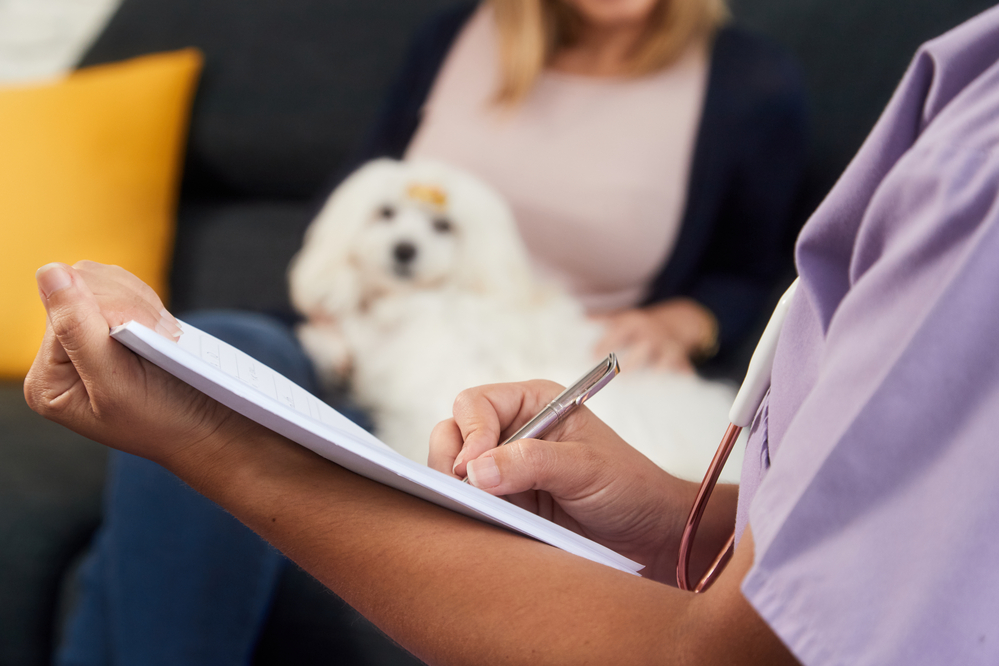
If you’re switching to a new veterinarian for any reason, the most important thing to bring with you to the first visit is whatever medical records you have for your pet. The more detailed these records are, the better. Call your previous veterinarian to obtain them if necessary. If you can’t get the records, then anything you have is better than nothing at all.
Your Own Identification
If this is your first time with this particular vet, you’ll also need your own identification, like your driver’s license. Your vet will need to verify your identity and set up your profile with that vet’s office.
Your Pet’s Medications
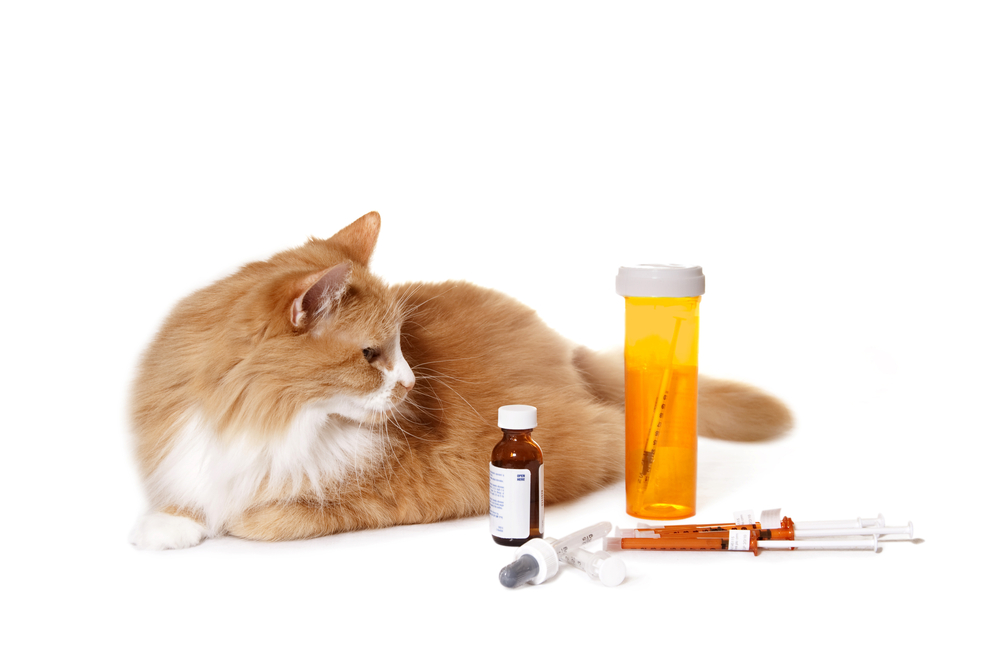
If you have been giving your pet any medications, you should bring the medications themselves and also a list of how frequently and how much of each medication you give your pet. This is so your new vet can evaluate what you’re giving to your pet and whether the medication is expired or needs a dosage adjustment. Keep in mind that this includes vitamins, flea treatments, and other normal medications, not just prescriptions for an illness or health condition.
Your Pet’s Food and Treats
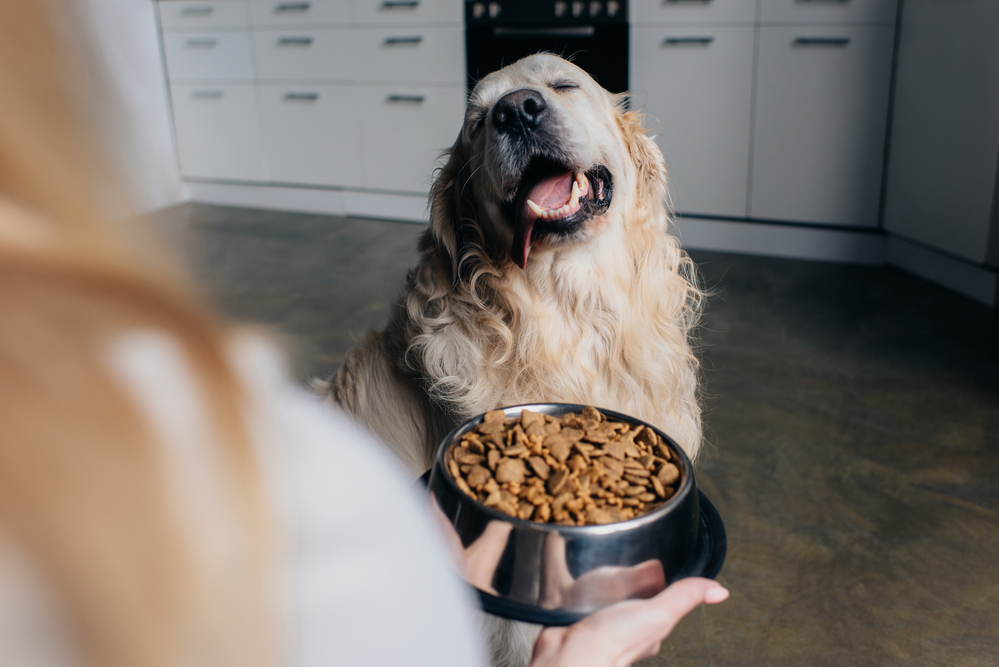
Nutrition plays a major role in your pet’s health. For this reason, your new vet will need to know exactly what and how much you’re feeding your pet. You don’t have to actually bring in the food, but take photos of the bag or write down what it is you buy.
Your Pet’s Favorite Treats or Food
Many pets are nervous at the vet. For this reason, go ahead and bring something that will help your pet to feel more comfortable. This could be your dog or cat’s favorite treat or a toy that will help them to relax and feel less nervous. If you don’t feed your pet prior to the appointment, your vet can feed them during the visit, which can help to calm your pet down and make the visit better.
Stool and Urine Samples
Vets test stool samples for parasites and will need one from within 24 hours of your first visit. If you are concerned about your pet having a urinary issue, you can also bring a urine sample for testing.
A List of Your Questions
If you have any concerns about your pet’s health or any questions for your new vet, write them down and bring that list with you to the appointment. Your vet will be happy to answer any questions you might have and the list can help make sure that you don’t forget anything.
Ask Your Vet What You Should Bring
While the above items are commonly helpful to bring to your first visit, every vet is different. It’s a good idea to call your vet ahead of time and ask what they’d like you to bring with you. That way, you’ll be absolutely certain that you’ve got everything you need.

Concerned about your pet’s health?
Contact us
If your pet is exhibiting concerning symptoms or experiencing a medical emergency, please call our clinic at (407) 352-2579. We’ll help you through it.
A GPS tracker can tell you exactly where your pet is at all times
Read Time: 3 minutes
A beloved pet escaping or getting lost can be one of a pet owner’s worst nightmares. GPS tracking may be an option for you if you want to know where your furry family member is at all times. But before you invest your money in buying a GPS tracker, you should know both the benefits and the drawbacks of the technology and its use in finding lost pets.
The Pros of GPS Tracking a Pet
Pet owners looking for the peace of mind that comes from knowing where their pet is at any given moment may find GPS tracking to be a relief.
Peace of Mind
One of the most important benefits to a pet owner is the peace of mind a GPS tracker gives them. They can log onto an app or a website at any time and check that their pet is exactly where they should be. If for any reason your pet isn’t where you expect, the GPS tracker will let you know their exact location so they’re easy to track down.
Push Notifications Can Alert of an Escape
Many GPS trackers can send alerts via push notification on a mobile device to pet owners if their pet has escaped. The tracker can be set up to trigger an alert whenever a pet leaves the house, yard, or another designated area. This can help pet owners to more quickly find lost pets because they know the instant the pet has gone, reducing the risk of injuries or illness.
Pets Can Safely Explore Outdoors
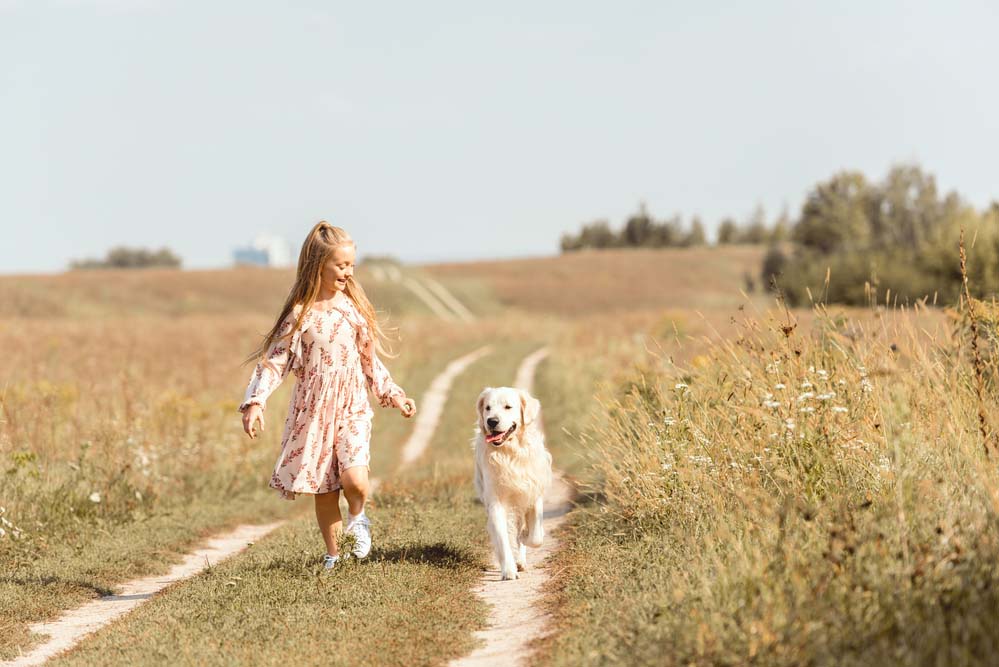
If you’d prefer that your dog or cat have the ability to safely explore outdoors, a GPS tracker can help you to not worry while they do. This is useful for pet owners with outdoor cats and large backyards. You don’t have to worry if you lose sight of your pet because you’ll always know exactly where they are.
You Can Better Understand Your Pet
Tracking a pet with GPS can help pet owners better understand what their pet does all day. They’ll know their favorite spots and where they like to explore. This can also help you to understand how active your pet is whenever you’re not there so you know if they need more physical activity and exercise when you are.
Different Features to Choose from
Another advantage of GPS is that there are a lot of different brands out there, which means that you’ve got the freedom to shop around and choose one that fits both your budget and your needs in terms of features. Plus, there are a variety of ranges to choose from, for example, either a range of 25 miles or an unlimited range.
Usable on Multiple Pets

With many GPS tracking systems, you can monitor multiple pets on the same system. Each would need their own tracker, but they could be registered on the same system and could be watched from the same app.
Find a Lost Pet Faster
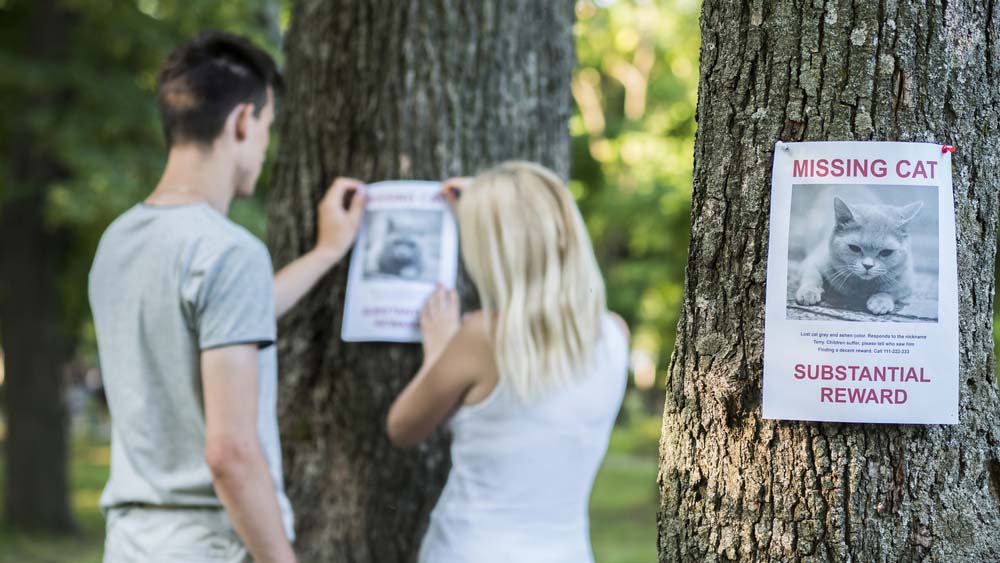
It’s important for pets to be microchipped and for their collars to have the owner’s contact information. However, with both of those options, you may have to just wait for someone to find your pet and call you. With a GPS tracker, you’ll have a location and can head right there so you don’t have to wait and worry.
Set up Boundaries
You can use a GPS tracker like an invisible fence as well as a tracker. Pet owners can program in boundaries and if the pet reaches those, it can vibrate, beep, or use LED lights to warn the pet that they’re approaching the boundary.
The Cons of GPS Tracking a Pet
Despite the numerous advantages of GPS tracking for pets, there are some disadvantages that pet owners should be aware of before investing in the technology.
GPS Trackers Can Be Expensive
A GPS tracker definitely isn’t within every pet owner’s budget. It can cost more than $100 for the tracking technology alone if you want a tracker with an unlimited range. On top of that, many trackers also have a subscription cost, which could also be up to $100 annually.
Difficulties with the Signal
GPS signals aren’t perfectly clear everywhere. This means that, depending on where you live, there might not be a strong enough signal for you to effectively track your pet using GPS.
Low Battery
GPS trackers are powered by batteries, which only last for so long. You’ll have to keep track of the battery’s strength constantly so that the one time you let the battery get low isn’t the time your pet gets lost.

Does your pet need veterinary care?
Contact us
Book your appointment to get your pet the preventative care they need at (407) 352-2579. We’ll help keep your pet healthy.

Talk to your vet to ensure your pet gets all the vaccinations they need
Read Time: 5 minutes
Vaccinations are a major part of keeping your pet healthy and safe. Shots can help to prevent many diseases that could be harmful or even deadly to your pet. But what shots does your pet need to get and when?
Puppies and kittens can get different diseases and therefore have different vaccination schedules. These vaccinations also differ from what shots a dog or cat needs as an adult.
Puppy Vaccination Schedule
The following shots are those that puppies will need in the first 16 months of their lives. Puppies should receive their first vaccinations as early as 6 weeks old. Some vaccines may be considered optional because whether they’re needed may depend on your and your puppy’s lifestyles. Ask your vet if they recommend any of the optional vaccines.
6 to 8 Weeks Old
Required vaccinations include:
- Distemper
- Parvovirus
Optional vaccinations include:
- Bordetella
10 to 12 Weeks Old
Require vaccinations include:
- DHPP, which includes:
- Distemper
- Hepatitis
- Parainfluenza
- Parvovirus
Optional vaccinations include:
- Influenza
- Leptospirosis
- Bordetella
- Lyme disease
16 to 18 Weeks Old
Require vaccinations include:
- DHPP
- Rabies
Optional vaccinations include:
- Influenza
- Bordetella
- Lyme disease
- Leptospirosis
12 to 16 Months Old
Require vaccinations include:
- DHPP
- Rabies
Optional vaccinations include:
- Coronavirus
- Bordetella
- Lyme disease
- Leptospirosis
What Vaccines Do Adult Dogs Need?
Some of these vaccines need to be administered on a regular basis into adulthood. DHPP and rabies are required but the other vaccines are optional depending on your pet’s lifestyle. Make sure to speak with your vet regarding which vaccinations your dog needs to be safe and healthy.
- DHPP – every 1 to 2 years
- Rabies – every 1 to 3 years
- Influenza – every 1 to 2 years
- Bordetella – every 1 to 2 years
- Coronavirus – every 1 to 2 years
- Leptospirosis – every 1 to 2 years
- Lyme disease – every 1 to 2 years
Kitten Vaccination Schedule
Just like with puppies, there are vaccines that are required, sometimes by law, for kittens to get at certain times. Others are optional or recommended based on your cat’s lifestyle. Speak with your vet regarding what of the optional vaccinations you should get for your kitten.
6 to 8 Weeks Old
Require vaccinations include:
- FVRCP, which includes:
- Viral rhinotracheitis
- Calicivirus
- Panleukopenia
Optional vaccinations include:
- FeLV (feline leukemia)
10 to 12 Weeks Old
Require vaccinations include:
- FVRCP
Optional vaccinations include:
- FeLV
14 to 16 Weeks Old
Require vaccinations include:
- FVRCP
- Rabies
Optional vaccinations include:
- FeLV
1 Year Old
Require vaccinations include:
- FVRCP
- Rabies
Optional vaccinations include:
- FeLV
What Vaccines Do Adult Cats Need?
Adult cats should continue to receive the following vaccines:
- Rabies – every 1 to 3 years
- Panleukopenia – every 1 to 3 years
- Herpesvirus – every 1 to 3 years
- Calicivirus – every 1 to 3 years
- Bordetella – every year
How Much Do Vaccines Cost?
How much pet vaccines cost depends on the vaccine and your location but typically range between $25 and $100. There may be discounts available at animal shelters if you adopt your pet there.
Why Are Pet Vaccines Necessary
It’s vital for your pet’s health to stay up-to-date on all vaccines required or recommended by your vet. The diseases they protect your pets from could be harmful or even fatal. In some cases, like with the rabies vaccine, it’s required by law because the disease is dangerous and deadly to both animals and humans.
Are Pet Vaccinations Required by Law?
Not all vaccinations are legally required. The rabies vaccine, for example, is required by law. Others may be optional depending on your pet’s lifestyle and therefore wouldn’t be a legal obligation.

Concerned about your pet’s health?
Contact us
Book your appointment to get your pet the preventative care they need at (407) 352-2579. We’ll help keep your pet healthy.

Sub title
Read Time: 4 minutes
Unless you’re a licensed animal breeder, it’s important to make sure that your pets are spayed or neutered. This is in part so that you don’t contribute to the already too-large population of animals in shelters but also for health and behavior reasons. For most pet owners, veterinarians recommend spaying and neutering due to the many benefits that come from the procedure.
What Is the Difference Between Spaying and Neutering?
Spaying and neutering are commonly mixed up. They both prevent a pet from having offspring, but each procedure removes a different type of reproductive organ, depending on whether the pet is male or female.
What Is Spaying?

Spaying is the process of removing a female animal’s reproductive organs, including the ovaries and the uterus.
What Is Neutering
Neutering is the process of removing a male animal’s testicles.
What Are the Benefits of Spaying or Neutering a Pet?
While the most obvious benefit of spaying or neutering your pet cat or dog is that they won’t be able to have kittens or puppies, there are other benefits as well.
#1
Reduced Risk of Cancer
There are certain cancers that can occur in the reproductive organs of animals if they aren’t spayed or neutered. These include testicular cancer in male animals and, in female animals, ovarian and uterine cancers. The organs in question are removed during the spaying or neutering process and therefore cannot develop cancer.
#2
Improved Behavior
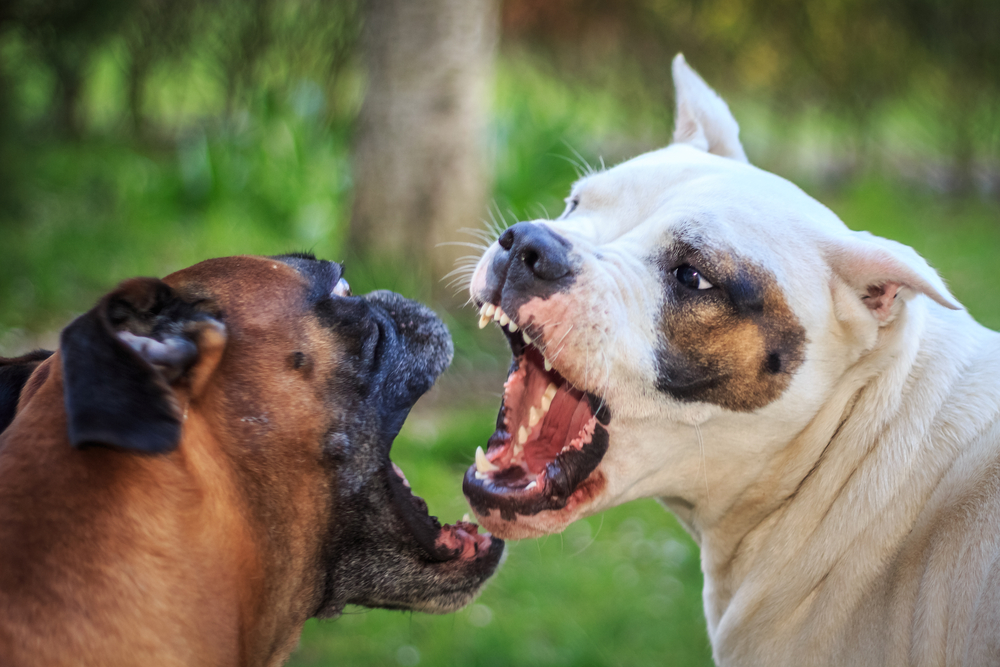
Some pets may exhibit undesirable behaviors when they haven’t been spayed or neutered. Male pets in particular that haven’t been neutered may be more aggressive and may bite. Spaying and neutering can help to improve these behaviors.
#3
Lower Risk of Injuries
Pets that have access to the outdoors that haven’t been spayed or neutered may wander far from the home. This could result in injuries caused by a car accident or fights with other animals. Pets that have been spayed or neutered won’t feel such an urge to wander and therefore will stay closer to home.
#4
Healthier, Longer-Lived Pets

Because of the reduced risk of cancer and injuries, pets that have been spayed or neutered are often able to live longer, healthier lives than those that have not. If your pets aren’t wandering as much, then they’re also less likely to contract other diseases that could spread from animal to animal.
#5
No Marking or Spraying
Marking or spraying is the practice of marking territory or pets introducing themselves to other animals. Outside, this may be perfectly fine. It can be a method of greeting other animals. However, when it’s done inside the house to mark territory, then it can be problematic for pet owners. Spaying or neutering can help to reduce or even eliminate spraying or marking, although it’s not guaranteed.
#6
No Heat Cycles
When a female animal is in heat, then other animals may be attracted to her. Spaying your pet can help to reduce this unwanted attention and stop male animals from bothering her or impregnating her.
#7
Helps Reduce Animal Overpopulation

There are millions of animals living in shelters across the United States. In some cases, shelters have no choice but to euthanize animals that are sick, older, or otherwise less likely to be adopted in order to make room for more. Some areas have a problem with stray animals. By spaying or neutering your pets, you’re ensuring that you and your pets are not contributing to the overpopulation problem.
Are There Risks Involved with Spaying or Neutering?
Both spaying and neutering are very common procedures. In fact, they’re among the most common procedures that veterinarians perform. This means that there’s a very low risk of anything going wrong. However, both are still surgeries, which are never risk-free. Complications are unlikely, though.
When Should You Spay or Neuter Your Pet?
It’s best to spay or neuter your pet at a young age. Which age is recommended depends on the type of pet you have. In cats, it’s best to neuter or spay before the age of five months. In dogs, between six and nine months is typically recommended. However, you should speak with your veterinarian so you can schedule the appointment for the best possible time.

Concerned about your pet’s health?
Contact us
If your pet is exhibiting concerning symptoms or experiencing a medical emergency, please call our clinic at (407) 352-2579. We’ll help you through it.
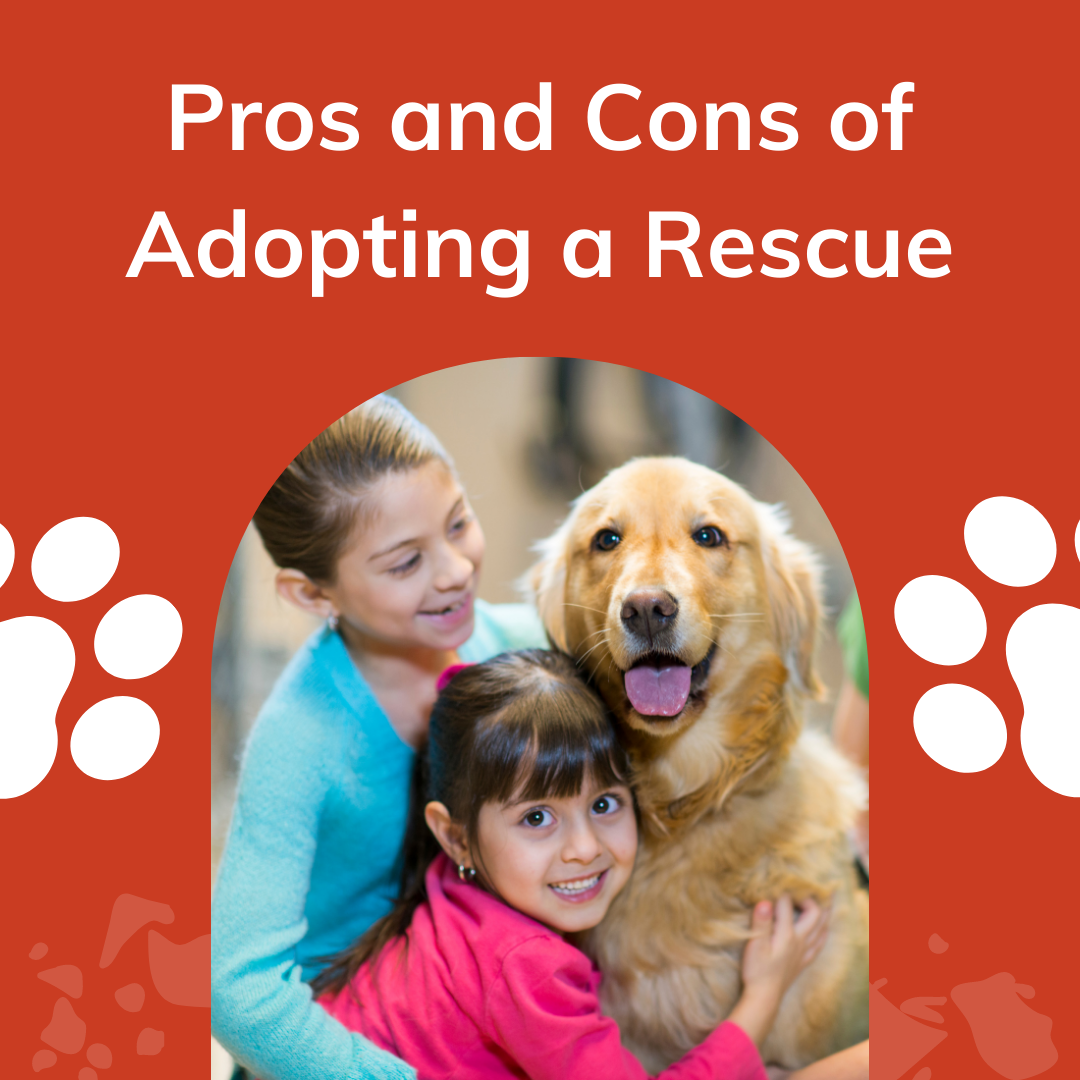
Having a pet can be a very rewarding experience. Where you adopt your new pet from, however, can really matter. Some people feel better adopting from a breeder while others swear by adopting only rescue pets. So long as where you adopt from is ethical, there’s no one right answer. Before you decide, you should learn the pros and cons of adopting a rescue.
Why Should You Adopt From a Shelter?

There are millions of animals that are taken into shelters each year. Some of these animals may be at risk of never being adopted or even being put down. Adopting a rescue could help save an animal’s life while simultaneously freeing up space at the shelter for another animal that needs it. But that doesn’t mean that adopting a rescue is for everyone.
You Could Save an Animal’s Life
One of the biggest benefits of adopting a rescue is that you could be saving the animal’s life. While no shelter wants to euthanize animals, they often have no choice due to the sheer number of animals that they care for. Any animal adopted from a shelter not only saves that animal in particular but also frees up more space in the shelter to help additional animals.
Your Rescue May Already Be Trained
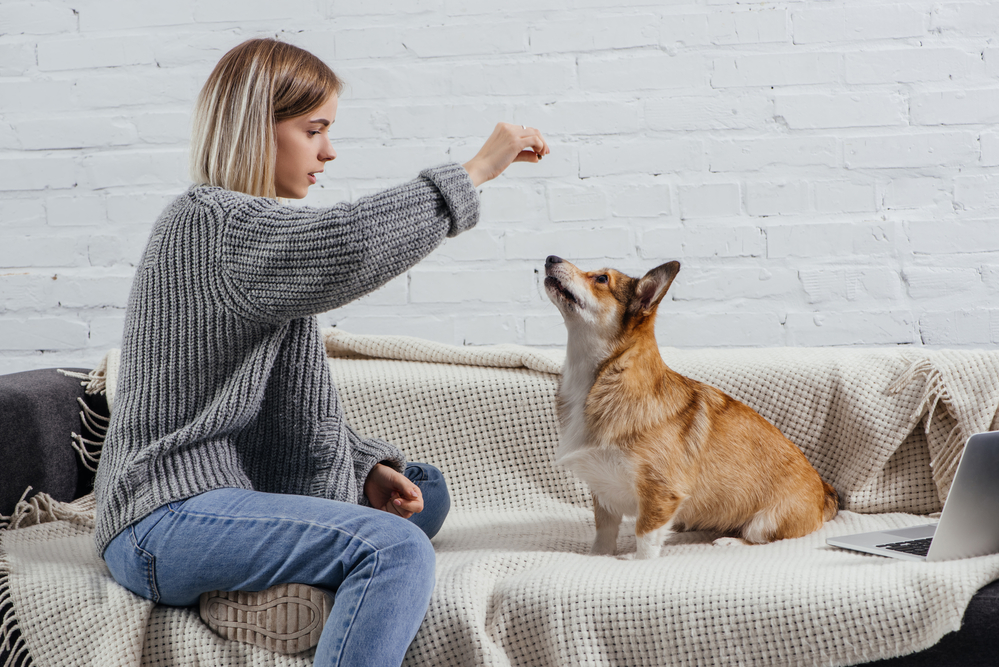
One of the hardest parts about owning a puppy or a kitten is having to train them. With a rescue, however, this is often already done by the previous owner or by the shelter itself. Having a new pet that is already housebroken can make the transition a lot easier for everyone.
You Could Save Money
No matter what, adopting a pet will cost money. You’ll have to pay for food, toys, visits to the vet, and more. But you can save money by adopting a rescue. There are fees involved with adopting from a shelter, but they’re typically much less than buying from a breeder. Plus, many shelters will have discount days or days on which the fees are waived in order to encourage more adoptions.
A Rescue May Have Fewer Health Problems
Some purebred dogs come with health issues that are specific to that breed. For example, some larger breeds of dogs are more prone to hip dysplasia and some breeds with flatter faces suffer from breathing problems. Rescue dogs tend to be mixed breeds. An advantage of this is that they’re much less likely to have any health conditions associated with a breed, even if that breed is included in the mix.
Rescue Animals Are Appreciative

Some rescue animals have had bad experiences in their pasts. Even if they haven’t, a shelter isn’t the most loving environment. This isn’t the fault of the people who work there, who often love animals, but simply because there are so many animals in shelters that workers have to focus on their basic needs first. They do their best to love every animal, but it’s not the same as having a family. This means that rescue animals are often more appreciative of having an owner or a family.
You Can Reduce Puppy Mills
Puppy mills are breeders that don’t treat their animals very well, often keeping them in overcrowded, unsanitary cages. These puppy mills will continue to exist so long as they’re making a profit, so if you adopt a rescue, you’ll be putting your money towards a better cause.
Why Shouldn’t You Adopt a Rescue?
Adopting a rescue from a shelter isn’t for everyone. It’s important to be aware of the possible downsides before you begin the adoption process.
Shelter Dogs Are Usually Mixed-Breeds
If you’re into dog shows or dog breeding, then a shelter dog most likely isn’t for you. Most shelter dogs are mixed breeds and won’t be suitable for that purpose. It’s possible you won’t know the breed at all. However, mixed breeds are great options for pet owners who just want to add a dog to their family.
Shelter Animals May Not Be Ideal for FIrst-Time Pet Owners
First-time pet owners may not want to adopt a dog or cat from a shelter because their health and behavioral histories may be unknown. Some shelter animals may have problems that first-time owners may have difficulty dealing with. Experienced pet owners may have an easier time helping shelter animals.
It Can Be Difficult to Find a Puppy or a Kitten
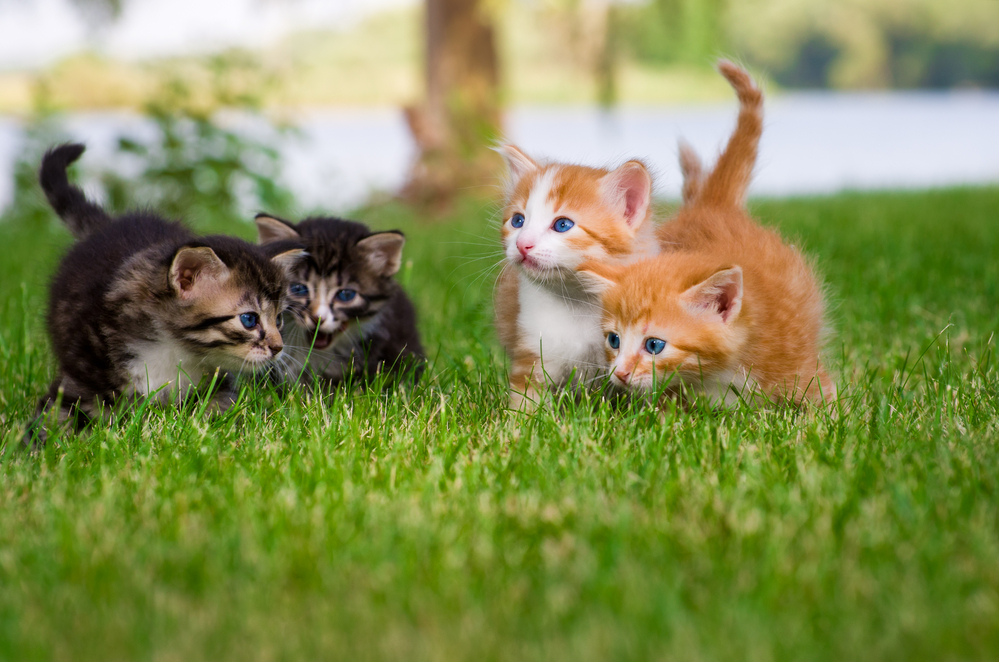
Those wanting to adopt a puppy or a kitten may have difficulty adopting one from a shelter. Shelter animals are often adult animals and while puppies and kittens can be found there, it’s not common. Adopting an adult animal does usually mean that they’ve already been housebroken and trained so you won’t have to do that yourself.

Concerned about your pet’s health?
Contact us
If your pet is exhibiting concerning symptoms or experiencing a medical emergency, please call our clinic at (407) 352-2579. We’ll help you through it.

While traveling can be fun, it can also be stressful. There’s a lot to organize and arrange before you go, even for something relaxing like a vacation. Traveling with a pet can be even more stressful, for both you and your pet, especially when you’re flying. Therefore, the best thing you can do is to research everything you can ahead of time so you can rest assured that you’ve got everything taken care of.
#1
Decide Whether or Not to Fly with Your Pet
First, you need to decide if flying with your pet is truly the right choice. Typically, it’s not recommended to fly with a pet unless it’s necessary. Flying can be stressful for pets, and in many cases, it’s not worth the hassle to bring them along, especially when the trip is short. If you’re going to be gone for two weeks or more, or if the move is permanent, then you’ll want to bring your pet with you on the flight. If the trip is for only a few days, however, consider boarding your pet instead.
#2
Make Sure Your Pet Meets the Airline’s Requirements
Some airlines may restrict which pets can fly with them. The airline will make its decision based on the following criteria:
- Size
- Age
- Breed
- Health
The airline may decide not to allow your pet to board the plane at all. If your pet is older and in poor health, the airline may not feel that it is safe for your pet to fly with you. Plus, there are laws regulating pets on aircraft. For example, your pet must be at least eight weeks old and weaned for at least five days before being allowed to fly. Some airlines ban certain breeds, such as snub-nosed breeds, because they have breathing issues that can be worsened on planes.
Cargo Hold vs. Airplane Cabin
 If your pet is qualified to fly with you, then you’ll need to determine whether or not your pet can fly with you in the cabin or whether they’ll need to fly in the cargo hold. Typically, a pet’s size is the most important factor. Pets that are small enough to fit inside approved carriers that can fit underneath the seat in front of you on the plane are allowed inside the cabin. Pets that are too large to fit in those carriers will have to fly in the cargo hold, which is more stressful.
If your pet is qualified to fly with you, then you’ll need to determine whether or not your pet can fly with you in the cabin or whether they’ll need to fly in the cargo hold. Typically, a pet’s size is the most important factor. Pets that are small enough to fit inside approved carriers that can fit underneath the seat in front of you on the plane are allowed inside the cabin. Pets that are too large to fit in those carriers will have to fly in the cargo hold, which is more stressful.
Cargo Hold
Some dogs are too large to fly even in the cargo hold, so check with your airline ahead of time to make sure that your dog meets their size requirements. Additionally, some pet owners choose not to fly their pet at all if they have to go into the cargo hold. This is because it can be stressful for the pet.
Airplane Cabin
If your pet is small enough to fit under the seat in front of you, you can bring them into the cabin with you. Your pet’s carrier will count as your carry-on luggage, however, so you may need to check a bag when you wouldn’t normally have to.
#3
Register Your Pet with the Airline
It’s a good idea to register your pet with the airline as soon as you know you’re flying with them. This is because some airlines have limits on the number of pets that can be in the cabin at once. If this is the case, it’s typically first-come-first-served. This means that the sooner you let the airline know that you’re flying with a pet, the more likely you are to be able to bring your pet.
Plus, letting the airline know ahead of time that you’re flying with a pet is a courtesy so that it’s easier for them to make arrangements. For example, if someone is flying who has extreme pet allergies, it’s easier for the airline to accommodate everyone if they’re aware ahead of time.
#4
Understand Airline Fees
Airlines usually charge pet fees. This can be up to around $200 for pets traveling in the cargo hold and up to $75 for pets traveling in the cabin. However, this may differ depending on the airline, so you should research this before you book your flights. It may also depend on the size of your pet. If you have a very large dog, for example, the costs may be even more.
#5
Choose the Right Carrier
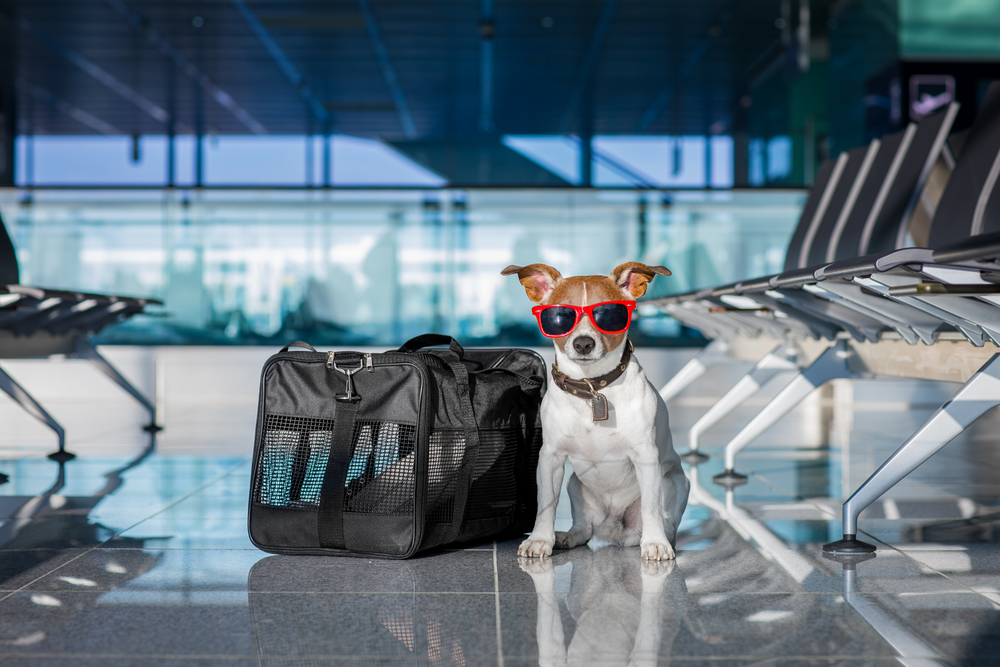 If your pet is small enough to fit under the seat in the cabin, you’ll need to keep them in a carrier. Your best bet is to purchase a pet carrier directly from the airline you’re flying with. That way, you’ll know that it meets their requirements. If you’d prefer to use your own, airlines typically have size limitations. The carrier must also be a soft one, not a hard plastic one.
If your pet is small enough to fit under the seat in the cabin, you’ll need to keep them in a carrier. Your best bet is to purchase a pet carrier directly from the airline you’re flying with. That way, you’ll know that it meets their requirements. If you’d prefer to use your own, airlines typically have size limitations. The carrier must also be a soft one, not a hard plastic one.
Your pet must also be able to comfortably stand up and turn around within the carrier.
Cargo Hold Crates
If your pet is flying in the cargo hold, then you’ll need a hard crate. Pet owners are legally required to line the floor of the crate with an absorbent material, such as a towel or shredded paper. Check your airline’s requirements on the size and other possible requirements of a crate for a pet traveling in the cargo hold.
#6
Take Your Pet to the Vet
Whether a vet visit is required depends on the airline. Many require a signed certificate from a vet issued within ten days of your flight showing that your pet is healthy enough to travel. You may want to book your pet’s vet appointment ahead of time so that you know you’ll be on the vet’s schedule.
Print Required Documentations
You’ll also most likely need to prove that your pet has had all of their required vaccinations. Different airlines may have different requirements for what documentation they want to see. You can keep digital records of these documents, but it’s still a good idea to bring paper copies with you just in case.
#7
Look up Local Pet Regulations
If you’re flying internationally, your destination country may have regulations pertaining to incoming pets. For example, some countries have quarantine periods for any pets flying in. This is another reason why many choose not to bring their pets along for shorter trips. Sometimes, the quarantine period can be longer than the trip itself! Additionally, other countries may have documentation requirements beyond what the airline asks for.
#8
Prep Your Pet for Flight
Flying is stressful for a pet. You should crate train them so that they’re comfortable sitting in a crate for long periods. For many pets, a crate or carrier can be a safe zone that will help them to be less stressed during the flight, especially if they’ve been trained in it ahead of time.
Don’t Tranquilize Your Pet
Whatever you do, however, don’t tranquilize your pet. While this may calm your pet, it can be dangerous for them in-flight. Vets don’t recommend tranquilization for this reason. Plus, the airline won’t let your pet on the flight if they’ve been tranquilized.
Be Careful About Medicating Your Pet
If you’d like to give your pet some anti-anxiety medication or Benadryl for the flight, talk to your vet first. Your vet can advise you on what, if anything, you should give to your pet.
#9
Arrive Early to the Airport
You’ll need as much extra time as possible at the airport. Make sure to arrive even earlier than you would normally.
Minimize Food and Drink
Be careful about how much food and drink you give your pet. There are limited options for where they can relieve themselves. There won’t be anywhere to do that in-flight, but airports typically have animal relief areas that your pet can use. Your pet can go without food for any length of flight, but for a flight longer than four hours, you’ll need to give them some water. A water dish will need to be secured firmly in the crate if your pet is flying in the cargo hold.
Pick up Cargo Hold Pets Immediately
If your pet has to travel in the cargo hold, make sure to pick them up after your flight as quickly as you possibly can. Your pet’s already been waiting for a long time in the cargo hold without you. They’ll be anxious to see you as soon as possible.




